
http://www.iaeme.com/IJM/index.asp 56 editor@iaeme.com
International Journal of Management (IJM)
Volume 9, Issue 2, March–April 2018, pp. 56–63, Article ID: IJM_09_02_006
Available online at
http://www.iaeme.com/ijm/issues.asp?JType=IJM&VType=9&IType=2
Journal Impact Factor (2016): 8.1920 (Calculated by GISI) www.jifactor.com
ISSN Print: 0976-6502 and ISSN Online: 0976-6510
© IAEME Publication
COMPARATIVE ANALYSIS OF MANPOWER
PLANNING IN INDIA: AN EXPERIMENTAL
APPROACH
Arindam Chatterjee
Ph.D Scholar, School of Management,
West Bengal University of Technology, India
Dr. S. Guha
Assistant Professor, School of Management Studies,
Narula Institute of Technology, India
ABSTRACT
The top management needs to follow an organized and systematic process to
operate, monitor and control Manpower planning measures in the Organizations. It is
obvious that the development and success of an organization are never possible
without competent, trained and satisfied people in the organization. Proactive
preparation in this matter is highly desired from the management that should be based
on the future targets of the management, as also anticipate changes in the external
factors. The parameters discussed or comparison hereinafter is closely interlinked to
carry a significant portion of outcome and end results. It becomes essential to foster a
holistic analytical view of the underlying factors in Indian scenario with a particular
comparative reference to the Information Technology and Manufacturing sectors in
order to derive a relevant and balanced recommendation on the research findings.
Key words: Manpower Planning, Information Technology, Manufacturing,
Comparative.
Cite this Article: Arindam Chatterjee and Dr. S. Guha, Comparative Analysis of
Manpower Planning in India: An Experimental Approach. International Journal of
Management, 9 (2), 2018, pp. 56–63.
http://www.iaeme.com/IJM/issues.asp?JType=IJM&VType=9&IType=2
1. INTRODUCTION
According to Youdi and Hinchliffe (1985) in their work titled “Forecasting skilled manpower
needs”, corporate manpower planning is extremely crucial today for every type of business
firm or public services organization. Corporate manpower planning is the department of any
company which manages the personnel’s working in that specific company. The process of
manpower planning basically involves understanding the availability and requirement of the
manpower pool for the company and then coming up with ideas that will help in bridging this

Comparative Analysis of Manpower Planning in India: An Experimental Approach
http://www.iaeme.com/IJM/index.asp 57 editor@iaeme.com
gap to a large extent. An approximate forecast is required for understanding this demand and
supply and there are various mathematical tools which can be used for the same. The
discrepancies are also analyzed with these tools.
1.1. Problem Statement
Manpower planning differs according to different sectors and hence manpower practices of
one sector cannot be effectively applied to other sector. Thus this study will aim to study and
provide solution to the issues by evaluating and understanding the differences in the reward
and promotion, and other manpower planning and practices by comparing IT and
manufacturing sector. To achieve this research work will examine the difference amongst the
manpower planning and practices in IT and manufacturing sector.
2. RESEARCH OBJECTIVES
To evaluate and understand the difference in the reward and promotion, and other manpower
planning and practices in IT and manufacturing sector.
To examine the difference amongst the manpower planning and practices in IT and
manufacturing sector.
To correlate the impact of different variables on Manpower Planning of mostly in IT and
Manufacturing Sector .
To prepare a compare and contrast study on the data gathered through sampling techniques
and find out possible recommendations on the study.
2.1. Research Hypotheses
H01: There is no significant difference in manpower practices on Productivity/ Efficiency IT
and manufacturing sector.
H02: There is no significant difference in the level of productivity/ efficiency with Manpower
Forecasting of mostly in IT and Manufacturing sector.
3. DIFFERENT ASPECTS OF MANPOWER PLANNING
According to Youdi and Hinchliffe (1985) in their research work “Forecasting skilled
manpower needs” corporate manpower planning is extremely crucial today for every type of
business firm or public services organization. Corporate manpower planning is the department
of any company which manages the personnel’s working in that specific company. The
process of manpower planning basically involves understanding the availability and
requirement of the manpower pool for the company and then coming up with ideas that will
help in bridging this gap to a large extent. An approximate forecast is required for
understanding this demand and supply and there are various mathematical tools which can be
used for the same. The discrepancies are also analyzed with these tools (Ruud, 1970).
Vajda (1970) has expressed their view on corporate manpower planning as the following:
“manpower planning is concerned with arranging for the necessary number of suitable people
to be allocated to various jobs, usually in a hierarchical structure,”
Geisler (1967) gives an even more analogous approach to corporate manpower planning.
It says that corporate manpower planning is all about having the right number of people and
the right kind for a given task. The timing of these people and the place where they are
present also matters. The entire purpose of having people is to enhance the economy of the
company. In order to achieve all this, it becomes paramount to have the right kind of
instruments for forecasting and controlling the development of the people who are hired and

Arindam Chatterjee and Dr. S. Guha
http://www.iaeme.com/IJM/index.asp 58 editor@iaeme.com
assigned a specific task. Thus, it becomes necessary to manage the people with the tools that
are present with the company.
3.1. Training Policies
Training is the most vital part of the advancement of HR and expanding up their productivity.
Training comes about into the advancement of innovation constantly at a quicker rate. Due to
the revealing of new advances, framework and techniques get obsolete soon. These comprise
of specialized, administrative and behavioral strands.
It is very difficult for an employee to perform well at the job place without any pre-
training (Thomas N. Garavan, 1997). Trained employees perform well as compared to
untrained employees (Partlow, 1996; Tihanyi et al., 2000; Boudreau et al., 2001). It is
absolutely necessary for any sector to give its employees training to get overall goals of the
organization in a better way (Flynn et al., 1995; Kaynak, 2003; Heras, 2006). Training and
development increase the overall performance of the organization (Shepard, Jon et al.,
2003). Training is always a worthy ploy in the long run (Flynn et al., 1995; Kaynak,
2003; Heras, 2006). It enhanced the overall skills and efficiency level leading to sectional and
overall organizational success both in quantitative and qualitative aspects. Moreover, in order
to get competitive advantage and continuous dominance over the business sector through
effective understanding and execution of new Technology and knowledge, training in
mandatory for all such skill reforms and technological advancement (Carlos A. Primo
Braga,1995).
3.2. Job Analysis
Clifford, 1994, vide his research established and on the efficacy and importance of job
analysis in different levels of human resource and manpower planning practices in related and
non-related category of organizations which also depicts corrective analysis and arrangements
with recourse in order to specify strengths and limitations along with necessary analysis on
skills and job requirements. Gatewood & Feild, (1994) illustrated in a different way where
assignments/jobs, human factors and employee attributes for a particular task, sub-task and
proportion of jobs as job analysis as a part of employee’s knowledge, skills and abilities
(KSAs) characteristics. McCormick, vide his study in 1976 stated that the accumulation and
formulation of job related information and related evaluations and specifications through job
analysis can be considered as a pre-requisite for Manpower planning both in short and long
run. Sanchez and Levine published in 2000 that many faulty propositions of the job analysis
may affect certain HR activities related to job design and job analysis and inter-related areas.
Earlier research in 1988 by by Mullins & Kimbrough; Schmitt & Cohen, 1989, Avolio &
Waldman, 1989 and Landy & Vasey, 1991 on direct and indirect variables of demographics in
job analysis analytics and ratings. Cascio, (1998) and later on Bowin & Harvey (2001)
reflected on the strategic significance of job analysis as a regulating factor of Manpower
Planning in overall performance of the Organization. Brannick and Levine (2002) defined this
as a process by which nature, purpose, methodology of the job is established and Job, task and
sub-tasks are fragmented into smaller parts and units for better execution and compilation.
3.3. Job Satisfaction
Job Satisfaction in late 90’s was termed as one of the most crucial and vulnerable factor of
manpower retention, planning, augmenting, monitoring, controlling and even development in
service, Manufacturing, Education and NGOs and the same was systematically described by
Locke (1976) and other Management scientists who defined job satisfaction as a pleasing or

Comparative Analysis of Manpower Planning in India: An Experimental Approach
http://www.iaeme.com/IJM/index.asp 59 editor@iaeme.com
positive emotional state resulting from the evaluation of a person’s job (Haque and Taher,
2008). Job satisfaction is defined by Robbins, 1999 as a one’s general attitude towards a job
mostly in terms of individual and group experiences generate out of it. Mullins (1993)
stressed on the difference of motivation and job satisfaction as both of them are inter-linked,
closely related significantly different from each other. There are many factors such as
employee needs , social status, relationships, quality of work life, empowerment issues, style
and involvement of management, job rotation & design, compensation and benefits, working
conditions, career opportunities, and sense of belongingness are considered to be the
determinants of job satisfaction (Byars and Rue, 1997; According to Robbins (1999), a
workforce with positive approach towards job can increase individual, departmental and
organizational productivity through lesser absenteeism, more intense and quality involvement,
proactive-ness, learning and implementation of knowledge with utmost accountability.
Moorhead and Griffin, 1999). According to Robbins (1999), also mentioned about few
incidences of destructive behavior, and low medical costs.
4. DATA ANALYSIS
4.1. Demographics of the Collected Data
Table: 4.2 Demographics of the collected data
Parameters
Sector
N
Min
Max
Mean
Varianc
e
Standard
Deviation
Job Analysis
IT
40
1
5
2.41
1.59
1.26
Manufacturing
40
1
5
2.19
1.38
1.18
Training Policies
IT
40
1
5
2.20
1.59
1.26
Manufacturing
40
1
5
2.24
1.42
1.19
Job Satisfaction
IT
40
1
5
2.55
1.78
1.33
Manufacturing
40
1
5
1.62
1.17
1.08
4.2. Feedback Received
Table: 4.3 Satisfaction Percentages
Feedback Percentage
Parameters
Sector
Strongly
Agree
Agree
Slightly Agree
Disagree
Strongly
Disagree
1
2
3
4
5
Job Analysis
IT
27%
35%
17%
12%
9%
Manufacturin
g
32%
40%
12%
8%
8%
Training
Policies
IT
38%
29%
17%
9%
8%
Manufacturin
g
32%
37%
15%
10%
7%
Job
Satisfaction
IT
27%
26%
23%
11%
12%
Manufacturin
g
69%
13%
9%
6%
3%
4.3. Hypothesis Analysis through T- Test
This section talks about the outcome of the hypotheses in the study, which aimed at assessing
significant difference between manpower practices and Job Satisfaction in IT sector and
Manufacturing sector.
H01: There is no noteworthy differentiation in Training planning and job satisfaction between
IT and manufacturing sector companies in India.

Arindam Chatterjee and Dr. S. Guha
http://www.iaeme.com/IJM/index.asp 60 editor@iaeme.com
Table: 4.4 Hypothesis Test A
Independent Samples Test
Sector
N
Mean
Std.
Deviation
Std. Error
Mean
t
Sig.
Training
Policies
IT Sector
40
2.200
.3850
0.0609
-.435
.065
Manufacturing Sector
40
2.235
.3332
0.0527
ANOVA
Sum of Squares
df
Mean Square
F
Sig.
Between Groups
.025
1
.025
.189
.665
Within Groups
10.111
78
.130
Total
10.136
79
Independent Samples Test
Sector
N
Mean
Std.
Deviation
Std.
Error
Mean
t
Sig.
Job Satisfaction
IT Sector
40
2.546
.5741
0.091
8.691
.061
Manufacturing Sector
40
1.618
.3564
0.056
ANOVA
Job Satisfaction
Sum of Squares
df
Mean Square
F
Sig.
Between Groups
17.245
1
17.245
75.537
.061
Within Groups
17.807
78
.228
Total
35.052
79
Inference:
Above table shows results of the study of the main hypotheses (H01). There is no significant
difference in training policies and job satisfaction between IT sector and manufacturing
sector. Results indicated that there is a slight difference in the Job Satisfaction in the IT sector
and manufacturing sector with significant level of .061, which results into the acceptance zone
of the null hypothesis. Hence it can be concluded that job satisfaction policies in IT sector is
slightly better than the manufacturing sector. Whereas, training policies manufacturing sector
is better than the IT sector (Sig. = 0.065).
Source: Primary Data

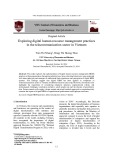
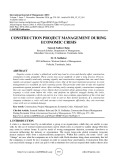
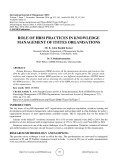
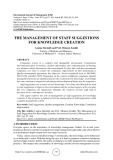
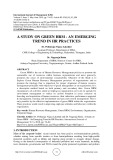
![Đề án quản lý và phát triển nhân sự tại đơn vị cấp phòng [Chuẩn SEO]](https://cdn.tailieu.vn/images/document/thumbnail/2017/20170419/msy1976/135x160/2751492583749.jpg)
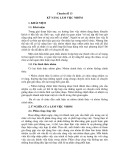

![Tài liệu đào tạo, bồi dưỡng lãnh đạo cấp phòng [Mới Nhất]](https://cdn.tailieu.vn/images/document/thumbnail/2017/20170210/nomoney3/135x160/2145657834.jpg)








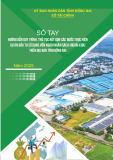
![20 câu hỏi Quản lý dự án phần mềm có đáp án [mới nhất]](https://cdn.tailieu.vn/images/document/thumbnail/2025/20251003/hieu2004haha@gmail.com/135x160/78791759734259.jpg)


![Tài liệu Quản lý dự án: Kiến thức nền tảng toàn diện [chuẩn SEO]](https://cdn.tailieu.vn/images/document/thumbnail/2025/20250910/kimphuong1001/135x160/92631757496585.jpg)



